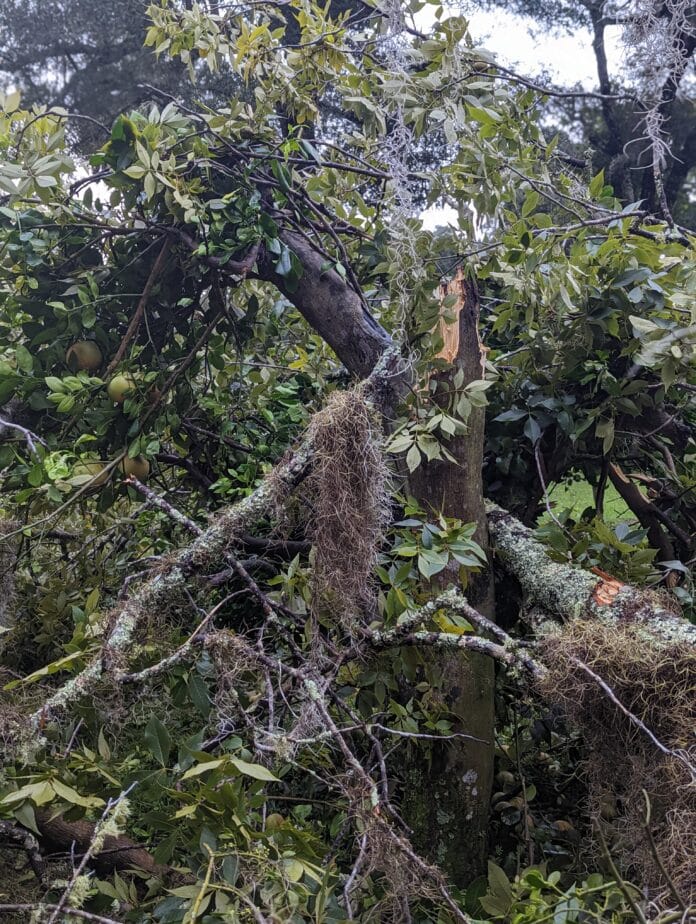Hurricane Ian’s damage to Florida’s agricultural industry could reach more than $1.5 billion statewide according to economists at the University of Florida (UF) The dollar value of damages to specific counties including Hernando County is yet to be determined, they said.
During an Oct. 18 press conference Christa Court, Ph.D., director of the Economic Impact Analysis Program at UF/IFAS said that combined seasonal crops, livestock, nursery, and aquaculture losses from Hurricane Ian will likely be valued at between $787 million and $1.56 billion. The Economic Impact Program assesses losses after events that disrupt the standard operations of Florida’s agricultural industry.
Wind and flooding are being blamed for damages sustained by agricultural operations away from the coast, Court said.
“Even though the coast – an area with comparatively less agricultural production than inland areas – bore some of the worst impacts of the storm, the strong winds and heavy rains battered a wide swath of the peninsula that includes over 5 million acres of agricultural land,” said Court, who is also an assistant professor in the UF/IFAS food and resource economics department. “This estimate only accounts for production losses or changes in expected revenues for the current calendar or market year; citrus, for example, had not yet begun harvesting, and some fall vegetables, like tomatoes and peppers, were already planted.”
Specifically, citrus crops are expected to have between $147 to $304 million in losses depending on the level of crop damage, damage to branches, and other impacts from heavy rain and flooding. Damages to vegetable and melon crops are estimated at between $208 million and $394 million depending on producers’ ability to replant damaged or destroyed crops.
Finally, damage to operations in the beef, dairy, cattle, and horse industries as well as producers of milk, eggs, and honey are estimated to fall between $113 million and $222 million. Damage to fencing, power outages, and flooding are being blamed for the losses.
Estimates of losses in specific counties are still coming in from individual growers, animal-related industry operators and industry groups including farm bureaus are still coming in, Court said.
“We just don’t have information from the county level, yet,” she said.
Court also declined to comment on how the losses might affect consumer prices.
“Our group does not comment on the impact of consumer prices,” she said.
Court also declined to comment on how the losses might affect the agricultural labor market in the state.
Court said the survey will remain open indefinitely. The program will release a full report once analyses are completed, she said.

